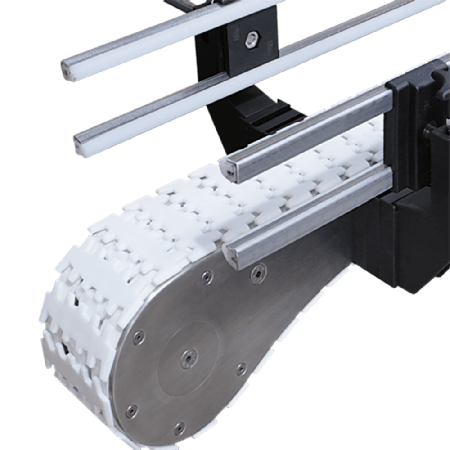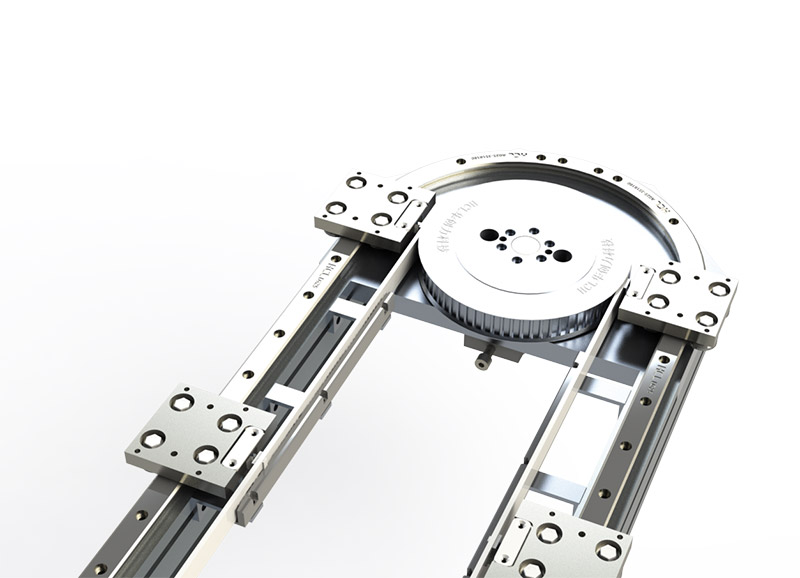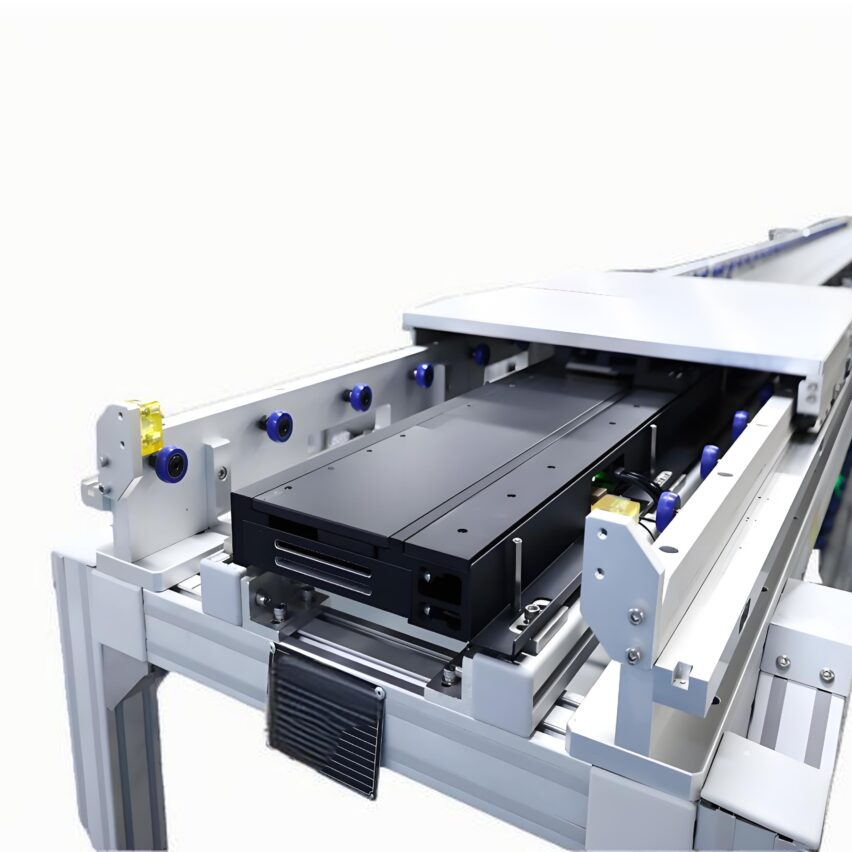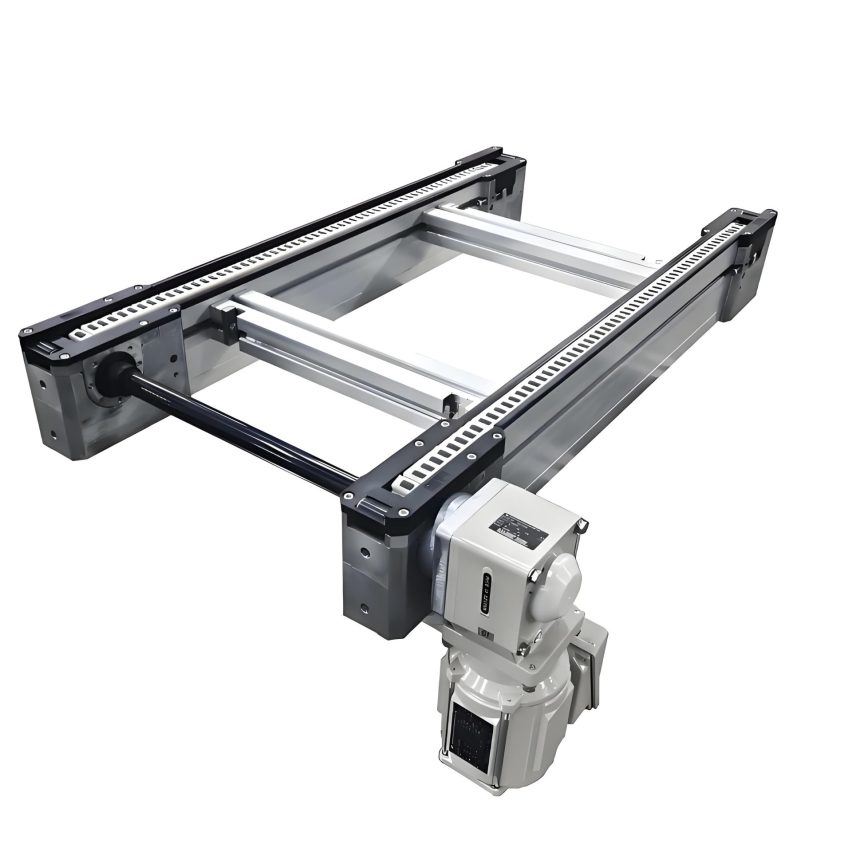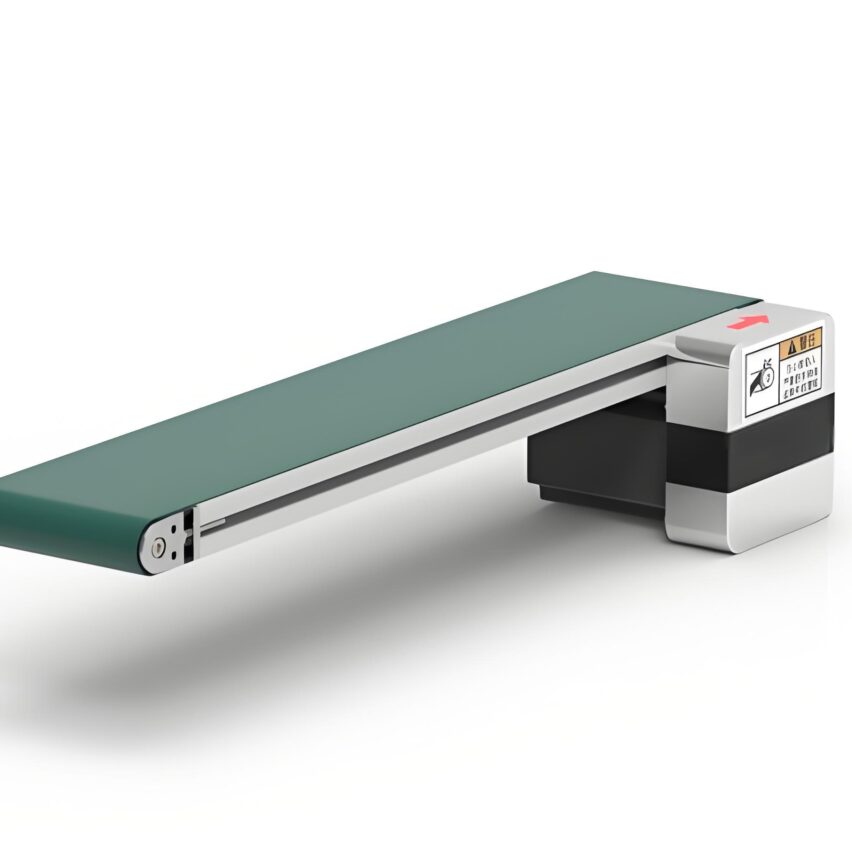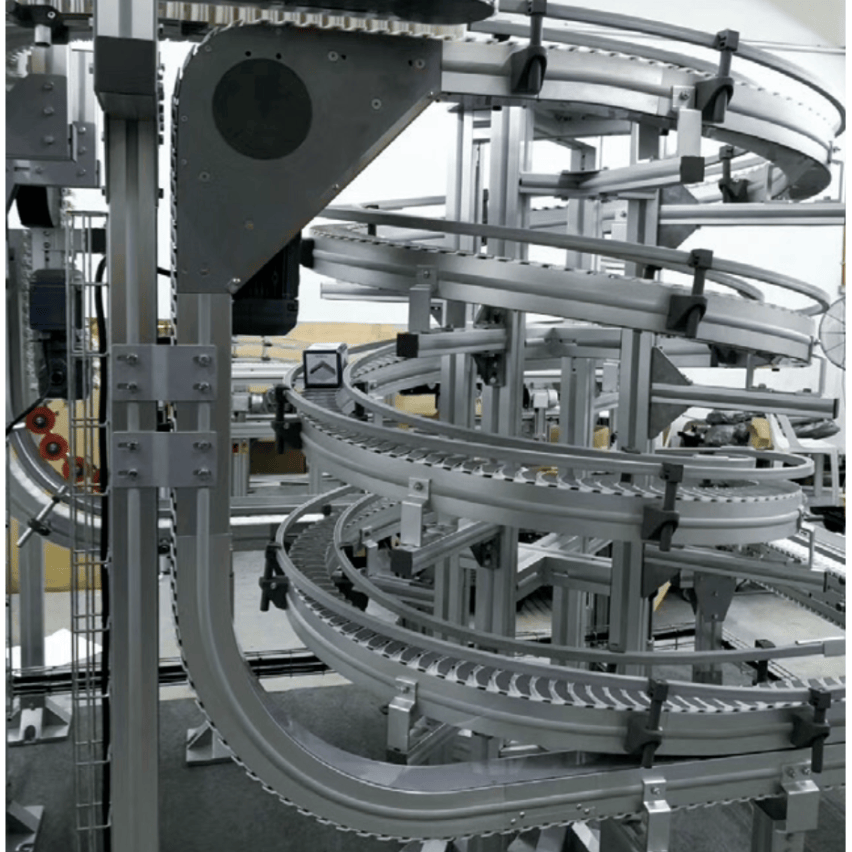
The core value of multiplier chains: why manufacturing is turning to them
Multiplier chain production line (also known as differential chain, free beat conveyor chain) is becoming a standard in high-end manufacturing industries such as electronics, automotive, pharmaceuticals and so on. Its core advantages are"Chain running at low speed, carrier moving at high speed" through unique speed increasing structure.--The speed of the workpiece plate can be up to 2.5 times or 3 times of the chain itself. This design subverts the uniform speed mode of traditional assembly line, so that the workpiece can be accurately paused in continuous conveying to meet the beat demand of assembly, inspection and other processes.Balancing efficiency and flexibility.
The mystery of the operation of the doubling chain: ingenuity in mechanical design
The multiplier chain's ability to increase speed is due to its precise mechanical construction:

- Double Diameter Roller System: The ratio of roller diameter (D) to roller diameter (d) directly determines the speed increase effect. When the chain advances at speed ν, the work plate speed V is calculated by the formula:
V = (D/d + 1) × ν
For example, when D/d = 1.5, V is up to 2.5ν. - low friction drive: Rolling friction between the plate and the rollers allows external forces (e.g. blockers) to pause the workpiece without damaging the chain. This "flexible forced beat control" is the key to the interface between manual assembly and automation.
In practice, material processes further optimise performance: engineered plastic rollers reduce noise and wear, while steel rollers are suitable for heavy loads; nickel-plated or stainless steel chains can cope with wet, corrosive environments.
Five key elements in designing a multiplier chain production line
-
Precision fit of chain to guide rails
The guide rail should be made of high rigidity aluminium alloy profile to ensure the straightness and prevent the chain from running out of alignment; the return guide device should avoid the chain jamming. Light load line (load ≤ 2.2 tonnes) and heavy load line (load ≤ 4 tonnes) need to be matched with different strength chain links. -
Dynamic optimisation of the active and passive side
- The motor is dynamically selected according to the load: 0.75kW servo motor is commonly used for light load lines, and 1.5kW or more is required for heavy load lines with gearbox.
- Double-row sprocket design disperses the force, and the transition roller articulates the lifting mechanism.
-
Co-design of functional modules
- stopping mechanism: Pneumatic or electric stopper for millimetre positioning of the workpiece plate with an error of ≤0.5mm.
- jacking mechanismThe top plate with a guide shaft is fitted with a locating pin to ensure stable assembly of the workpiece once it has been lifted.
- promotion agency: Double-deck line requires lift + belt conveyor line to achieve cross-deck circulation, saving flat space.
-
Guaranteed reliability of the tensioning mechanism
Conventional unilateral tensioning tends to skew the chain.Advanced programme with independent tensioning on both sidesThe synchronisation is adjusted by means of a screw. -
Intelligent Control System Integration
PLC + touch screen implementation:- Speed segment control (e.g., speed reduction in the assembly segment, speed increase in the no-load segment)
- Fault self-diagnosis (overload alarm, blocking stop)
- Real-time analysis of production data (beat tracking, OEE calculation)
Industry applications: comprehensive coverage from consumer electronics to new energy sources
- electronic semiconductor industry: Light duty line (load ≤ 500kg) for chip placement.Clean room design + anti-static rollersAvoid particulate contamination.
- automobile manufacturing: Heavy-duty wire-borne body welding.2.5x speed chain + jacking rotary tableEnables multi-angle assembly.
- Lithium battery production: The combination of the multiplier chain and the right-angle transplanter constitutes a closed rectangular circuit to complete the automatic flow of the core-module-package.
- Pharmaceutical packaging: Stainless steel chain in accordance with GMP standards, with the jacking mechanism to achieve aseptic filling.
个人观点:Double Chain Technology优化的三个方向
-
The potential of modular design has yet to be unlocked
Current vendors (e.g., Dongdaewon) offer customisation, but theLack of common interface standardsThis has led to difficulties in cross-vendor equipment integration. In the future, we can learn from the "Lego-style" design, standardise the guide rail, jacking module and control system, and shorten the delivery cycle by more than 30%. -
Engineering bottlenecks in growth rate theory
Theoretically, the higher the D/d ratio the higher the rate of increase, but limited by the chain pitch, theDifficult to increase the diameter of the rollers indefinitely. Some companies try to embed planetary gear sets in the rollers to increase the growth potential to 4-5 times, but the cost increases 40%. cost-performance balance is still a challenge.
Integration with digital twins
Chain vibration and temperature data are collected by sensors, and wear nodes can be predetermined in the virtual model.Preventive maintenance expected to reduce unplanned downtime by 70%However, the existing system data collection granularity is insufficient, and a breakthrough in low-cost high-precision sensing technology is needed.
Self-questioning: the central query of the multiplier chain production line
Q1:What is the core advantage of Speed Chain compared with traditional belt line?
A.A double revolution in efficiency and precision. Belt line can only convey at a constant speed, while the speed multiplier chain allows precise pauses (±1mm) in the high-speed movement of the workpiece, and assembly beat compression of 50% or more.Q2:What kind of supporting modification is needed for enterprises to introduce the speed multiplier chain?
A: Three simultaneous upgrades are required:- Uniform positioning interfaces for tooling boards (e.g. ISO tolerance standards)
- Air/circuit snap-in modules secure workstation power supply
- MES system access to PLC to realise the instruction issuance
Q3: Which scenarios are not suitable for multiplier chains?
A: Two types of scenarios should be treated with caution:- Ultra low speed assembly line(Beat > 5 minutes): Conveying efficiency advantages do not offset equipment costs;
- Irregular bulk transport: The absence of a work plate carrier can easily lead to roller jamming.
Conclusion: Evolution from traditional assembly line to smart and flexible production
The Speed Chain production line is by no means an iteration of a simple conveying tool, its essence is theRedefining the production relationship between "time" and "space" through mechanical ingenuity--Let the workpiece wait in the flow and be processed in the travelling. With the development of modularity and digital twin technology, the speed chain will gradually shed its "hardware shell" and evolve into the intelligent artery of a flexible manufacturing system.




